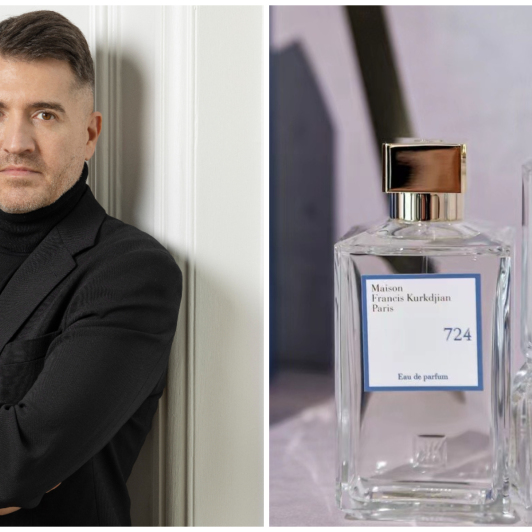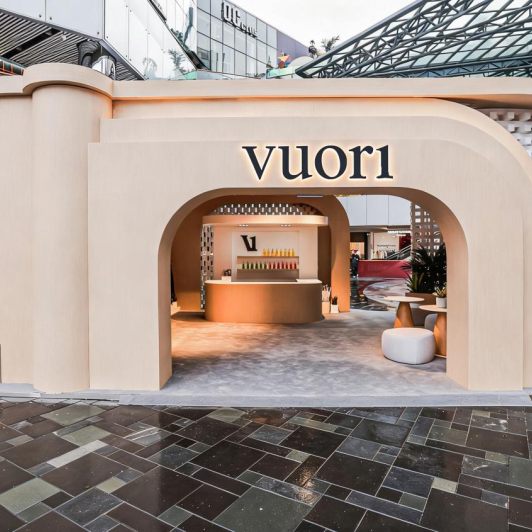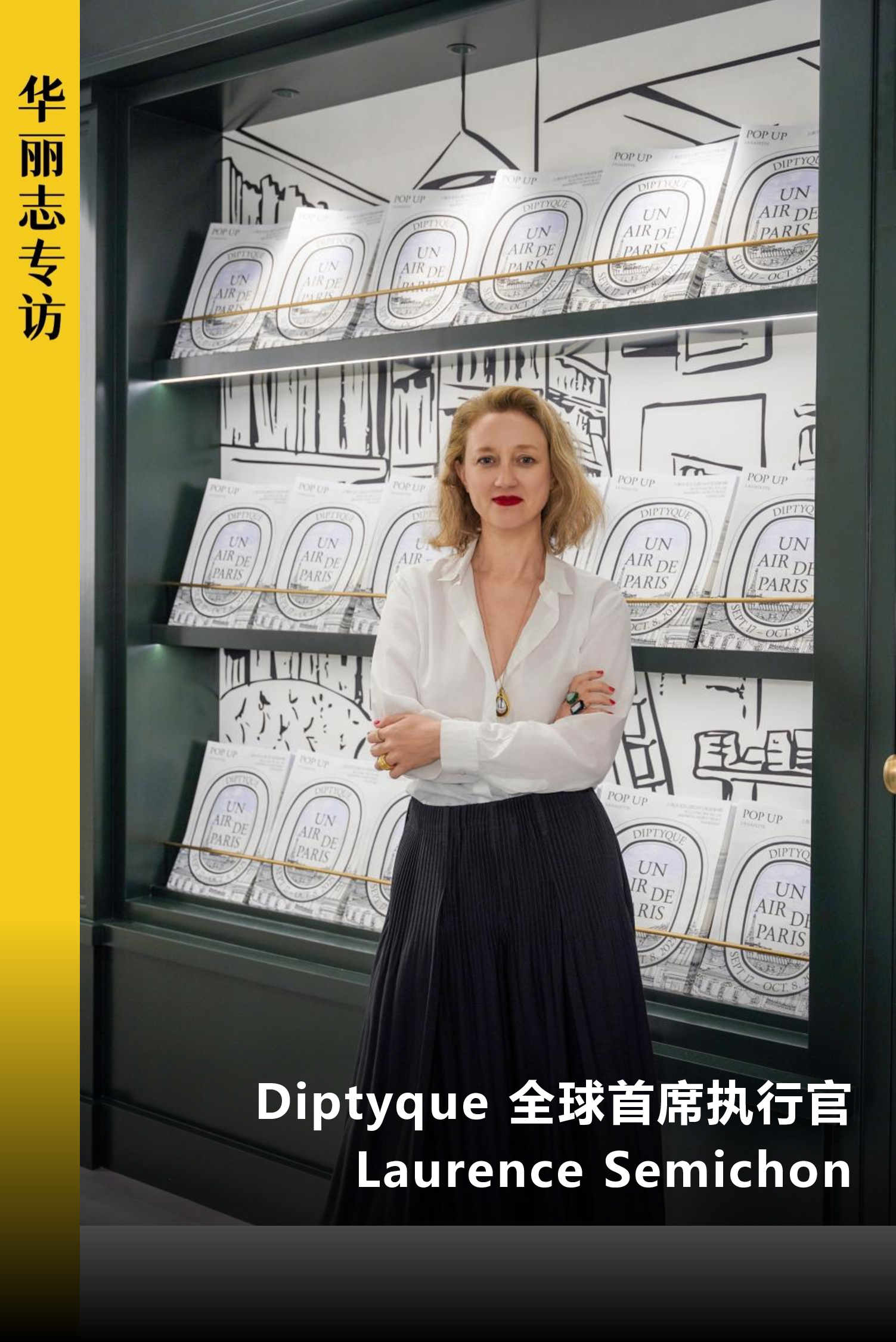On April 10th, the French fashion brand AMI held its second major show in China on the city walls of Xiangmen in the old town area of Suzhou. Right beneath the city walls, in Yanlord Cangjie, AMI opened its 17th store in mainland China.
“From the moment I joined the brand, I emphasized to the founder: If we have the ambition to expand the brand, we must capture the Chinese market,” Nicolas Santi-Weil, CEO of AMI, told Luxe.CO. “In the past two years, China has become AMI’s largest global market.”
In 2013, when Nicolas, who had experience as both an investor and a brand manager, became CEO of AMI, the brand’s annual sales were only 1.8 million euros. By 2023, AMI’s sales had surged past 300 million euros.
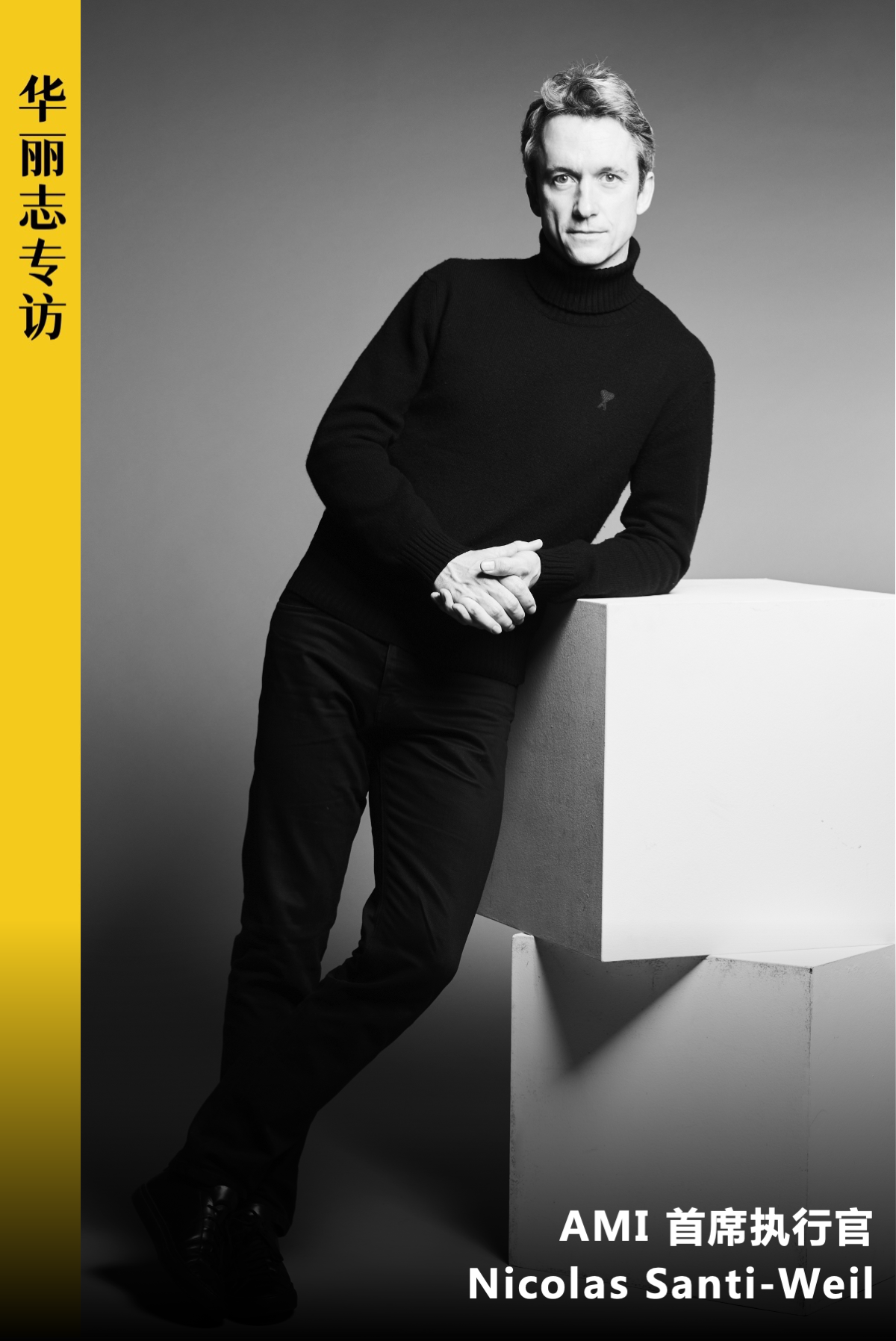
If AMI has successfully found the balance between being a contemporary brand and a designer brand in terms of style positioning, it is due to the talent and efforts of the brand’s founder, Alexandre Mattiussi.
On the business development front, AMI’s timely entry into and commitment to the Chinese market, which has won broader market recognition, can be attributed to the judgment and actions of Nicolas Santi-Weil.
Through this conversation with Nicolas Santi-Weil, CEO of AMI, we gain a better understanding of why AMI has been so vigorously successful among the many overseas fashion brands entering the Chinese market in recent years, and what risks he believes AMI needs to be cautious of in the future, as well as areas where the brand will focus its efforts.

Understanding China — “The Chinese Market Deserves Real Investment”
“I first came to China 20 years ago, sometimes visiting two, three, or even four times a year,” said Nicolas Santi-Weil, who has long been connected with the Chinese market, both as an entrepreneur and an angel investor. Before 2012, he served as a co-founding partner and executive director of the French brand The Kooples. Prior to that, he was the Global Development Director at Liste Rouge, a high-end custom shirt manufacturer in France.
Unlike many overseas brand CEOs, Nicolas’s understanding of China is not limited to frequent visits; he has ventured beyond Beijing and Shanghai into other cities, immersing himself in local cultures and lifestyles, witnessing the bustling Shenzhen, marveling at Chengdu’s tea-drinking customs, and enjoying the food in small restaurants in Guangzhou and Hong Kong.
His grassroots approach to exploring the market made Nicolas realize, “China is not just a giant in procurement and production.”
“The Chinese market is important but also challenging. Nevertheless, whether as a CEO or an investor, I consider it a very interesting market worth investing time, money, and manpower—deserving of real investment.”
Therefore, upon joining AMI, Nicolas persuaded founder Alexandre Mattiussi to focus on the Chinese market. In 2016, AMI entered the Chinese market, starting with small-scale wholesale.

Luxe.co: How did you come to understand the Chinese market?
Nicolas Santi-Weil: 20 years ago, because of my work in supply chains, I often came to China, sometimes four times a year. Cities like Hong Kong, Shenzhen, and Ningbo all offered many surprises.
For example, more than twenty years ago, during my first visit to Hong Kong, I walked the small streets of Kowloon, discovering local brands and small restaurants, which I love doing. The first time I went to Chengdu, I was surprised to see people gathering in the streets in the afternoon for tea. I enjoy street food, and the snacks there were delicious. The first time I went to Guangzhou, they took me to a restaurant that looked ordinary, but the food was fantastic.
Luxe.co: What was the situation when you joined AMI?
Nicolas Santi-Weil: When I joined, AMI was just “one year old,” and the brand’s revenue was very small, but for me, money was not the driving force. My motivation is to create something that makes me happy and proud, and to work with people I like.
I told the founder that I wanted to invest in AMI, and if the business developed, I would get a return. That’s why I became both an investor and the CEO.
Luxe.co: What was your understanding of the Chinese market at that time?
Nicolas Santi-Weil: I saw the young, trendy kids here who understand Western culture and are looking for new European brands to embrace the brands they want to learn about.
I believe if you want to enter the Chinese market, you must invest; you can’t just sell on Tmall or JD.com. You have to come to China, meet the people here, understand the culture, and know how Generation Z and millennials live, travel, and what clothes they want to wear.
When I discussed my observations about the Chinese market with Alexandre, he was curious. We not only went to Shanghai and Beijing together but also to different cities like Ningbo and Chengdu, where we interacted with Chinese designers, architects, chefs, and creatives, listening to their ideas. Alexandre also fell in love with Chengdu’s hotpot.
We were amazed at how eager they were to better understand French culture, French designers, and our lifestyle; in this regard, we are the same.

AMI’s major show in Suzhou
Investing in China — Stores, Fashion Shows, Teams
In 2019, AMI’s annual revenue was 35 million euros, which grew to 129 million euros in 2021 and continued to increase significantly to 230 million euros in 2022.
During the pandemic, which impacted the fashion industry, AMI managed to thrive against the odds, thanks to Nicolas’s timely strategic moves, bold bets, and firm commitment to the Chinese market.
Reflecting on AMI’s journey in China, the preparations made before the pandemic laid the foundation for subsequent rapid growth: In 2018, flagship stores were opened in Beijing’s Sanlitun and Chengdu’s Sino-Ocean Taikoo Li, presenting direct engagement opportunities with Chinese consumers. In 2019, a major fashion show in Shanghai marked the brand’s first show outside Paris.
“It was a bold move because China is a distant country, and we didn’t know if it would be successful, or if people would be willing to come. But we said, let’s make it happen.”
The Shanghai fashion show in October 2019, just months before the pandemic struck, garnered more attention from Chinese consumers. Nicolas revealed that within a month after the fashion show, sales increased by 2.5 times.
“When the pandemic began in Europe, China was already recovering… Our market in China was also growing, and in less than a year, we opened six stores, expanding our presence,” Nicolas recalled.
After the pandemic subsided in Europe, Nicolas and the management team quickly came to China, recruited a team, and established a subsidiary in Shanghai to directly manage the brand’s operations in China.
In July, the brand’s official WeChat public account was launched, followed by entries into Tmall and JD.com in August. Subsequently, several more stores were opened… That year marked a turning point for AMI in the Chinese market.

AMI’s latest boutique opened in Guangzhou’s Tianhuan Plaza in February this year.
Luxe.co: During the pandemic, how did AMI develop in the Chinese market?
Nicolas Santi-Weil: By that time, we had already opened our first flagship stores in Beijing and Chengdu and had held a fashion show. AMI was rapidly expanding in the Chinese market, opening six stores in less than a year, on a larger scale. We had a retail partner who performed exceptionally well and was a great help to us.
After the pandemic in Europe, we came to China as quickly as possible, took back operations from our partner, and formed a very capable and professional team in Shanghai.
Luxe.co: In business terms, what data do you focus on for AMI?
Nicolas Santi-Weil: The number of customers, including new and returning customers, as well as customer loyalty or repeat orders. These are the two main dimensions of AMI’s growth, which I think need to be considered together.

AMI boutique in Guangzhou Tianhuan Plaza
What’s the Story Behind the Suzhou Show?
This Suzhou fashion show was AMI’s second show in China. In 2023, AMI opened a boutique at Yanlord Cangjie, marking the brand’s 17th store in China.
Under the narrative of culture, AMI introduced itself to Suzhou through more tangible forms like stores and fashion shows, aiming to “convey a strong message, a cultural message, not just marketing or commercial activity, but to do something meaningful — sharing AMI’s story, and the best way to do that is by holding a show.”
Suzhou’s urban culture and historical heritage made CEO Nicolas and founder Alexandre fall in love with the city. Nicolas “hoped to build a bridge between China and France, which I think needs to be achieved through culture.”
Thus, AMI became the first fashion brand to hold a show on the Xiangmen city wall in Suzhou.
Nicolas had high hopes for the show: “I hope this fashion show will have a strong impact on China and even the entire Asian and global markets. When the brand begins to reduce investments and marketing activities, this event, this location, everything should be a powerful message.”
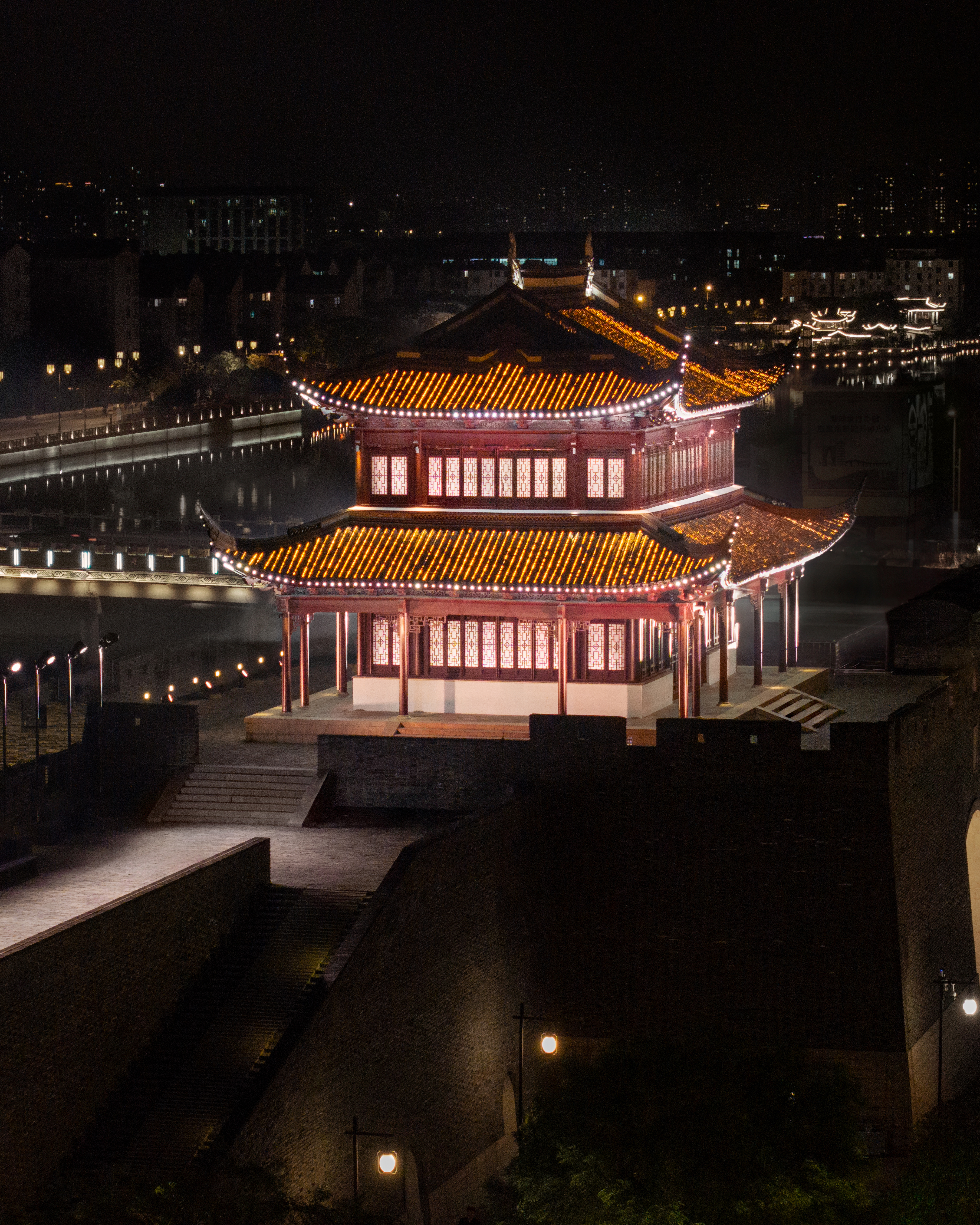
Xiangmen city wall in Suzhou
Luxe.co: What was the consideration behind holding the show in Shanghai in 2019?
Nicolas Santi-Weil: From 2011 to 2018, we had fashion shows in Paris for nearly 8 years, twice a year, and never held any shows outside Paris and France.
In 2019, I told Alexandre that if you really believe in the Chinese market, we must do something special there, not a commercial activity, but a strong cultural, iconic event. At that time, I said, I think it would be interesting to hold a fashion show there.
Before that, the live broadcasts of the shows attracted 20,000 to 40,000 viewers. But the Shanghai show had millions of viewers, which we had never seen before. I think it was a good momentum and a turning point.
Luxe.co: Why choose to showcase AMI in Suzhou through a major show again?
Nicolas Santi-Weil: By holding a show, you get to understand the city where the show is held. You need to find the right location, the right people, and the right way to understand the local culture, do everything localized without mistakes, to tell your brand story.
In Suzhou, we saw the small bridges, water, Suzhou gardens, and other cultural heritages and history, as well as the contrast between the new and old cities. We fell in love with the city, which is very interesting. We hope to build a bridge between China and France, which I think needs to be achieved through culture.

AMI Suzhou show
Luxe.co: Why open a store in Yanlord Cangjie in Suzhou?
Nicolas Santi-Weil: We came to visit Yanlord Cangjie early on, saw the ancient city walls, the design of the mall, and watched the entire project being built.
Opening a store in an excellent location is part of our global plan, and from this store, you can see the scenery of the city walls and temples. We spent a lot of time designing this store. Before opening, founder Alexandre came here specifically to experience Suzhou’s fan craftsmanship, etc., to truly understand and listen to the city’s stories and culture.
Yanlord Cangjie welcomed us very much, they believed in AMI, and wanted to do special things with AMI. We also hoped to share the brand’s story.
We became part of the Warehouse Street and reached an agreement with the owner to become the first fashion brand to hold a show under the city wall, which is very special.
This show was also about telling the story of AMI to the customers and citizens of Suzhou, telling them this is AMI, this is what AMI loves to do, and also expressing our love for their culture and architecture.

AMI Suzhou Warehouse Street boutique
Positioning as a “Friendly Luxury Brand,” How Does AMI Convey Emotional Value?
AMI’s founder, Alexandre Mattiussi, once worked in design at Givenchy, but Nicolas did not want to position AMI as a designer brand or a traditional luxury brand. Instead, their shared vision was to “capture the chic, nonchalant Parisian flair with a relaxed, genuine, and friendly fashion philosophy.”
He highlighted the key phrase for AMI as “friendly luxury.” As luxury brand prices soared to exorbitant levels, with some increasing by more than 50% in four years, many consumers were deterred, which opened a gap and opportunity for brands like AMI.
AMI differs from the “niche concept” of designer brands or the “exclusivity” of traditional luxury brands by emphasizing making customers feel joyful and warm. AMI’s differentiated positioning is based on emotional value, which narrows the distance between the brand and its consumers, true to the brand’s original intent: to create an ideal wardrobe for friends and loved ones.
Luxe.co: How does AMI position itself today?
Nicolas Santi-Weil: AMI (which means ‘friend’ in French) is a friendly luxury brand, genuinely proud of its craftsmanship and expertise. We are very happy, pure people; this is our vision, our understanding of luxury. We want to share this viewpoint through engaging and fun conversations with our friends in China. We always ask ourselves: Are we moving in the right direction? Is our vision understood? Does it resonate with people? Does it make sense in that country?
We want to maintain a friendly and enthusiastic approach, making friends (in business), even if someone just comes to see the brand and doesn’t buy anything. We want to befriend them and tell them what AMI is, who AMI is.
We always emphasize the concept of “family” (f.AMI.ly), which isn’t about where you are born but about where you connect with people and build lasting relationships—that’s the concept of family.

AMI boutique in Suzhou Warehouse Street
“Trust me, there’s still much room for growth”
Several years have passed since the pandemic, and to maintain growth, Nicolas emphasizes “respecting time.”
“If you move too fast, you can destroy the brand, destroy these stories. Trust me, there’s still much room for growth.”
Moreover, Nicolas remains highly cautious about the direct effects brought by the logo.
Among mainstream consumers, the brand’s “heart-shaped A” logo is already well-recognized, and perhaps part of AMI’s growth has been driven by the logo.
But Nicolas admits, “AMI is much more than just a logo.”
“AMI is professional, passionate, and disruptive, so we are not trying to be an everyday brand but to create a complete wardrobe. That’s what’s special about AMI.”
Nicolas emphasizes “sharing the full story of AMI,” letting customers understand AMI’s philosophy and history through the logo. Meanwhile, on some products, the brand’s logo is even becoming smaller and less conspicuous because he wants consumers to see a more complete, more possible AMI.


AMI Fall/Winter 2024 Collection
Luxe.co: How will AMI tell its brand story in the future?
Nicolas Santi-Weil: People recognize our logo, which is a label they want to showcase. A logo is simple and easy to sell. We are proud of this because the logo is a signature that Alexandre has used since childhood, genuinely his own.
But AMI is much more than just a logo. We train our staff to tell customers the story behind AMI and to talk about the designer, Alexandre, and his idea of a 360° full wardrobe.
If we were only driven by the logo, then in two years, it would be out of fashion, and people would want a new brand, because the same logo would be seen everywhere.
Luxe.co: What changes do you see in the challenges of the Chinese market?
Nicolas Santi-Weil: The challenge now is that customers are not spending as much money as before.
Some European brands might think, ‘Okay, the Chinese market is in crisis, let’s wait and see, let’s stop expanding stores for now.’ But I believe the crisis is temporary, and this country still holds tremendous potential. Perhaps customers won’t spend as much money, but they still want to dress up, find beautiful clothes, and become elegant. So, I think, we need to act, amplify our presence, and that’s why we are holding this major show.
Luxe.co: What are AMI’s future plans for its product lines?
Nicolas Santi-Weil: We spent about ten years establishing our menswear category, and for the past three years, we have been seriously developing a womenswear category. We want to first develop womenswear and accessories, then expand to children’s clothing, step by step.
China is the fastest-growing market for AMI accessories. The Paris Paris and Voulez-Vous series are growing very fast, so much that we have to transfer stock from other countries because the Chinese market has a strong response to these products.
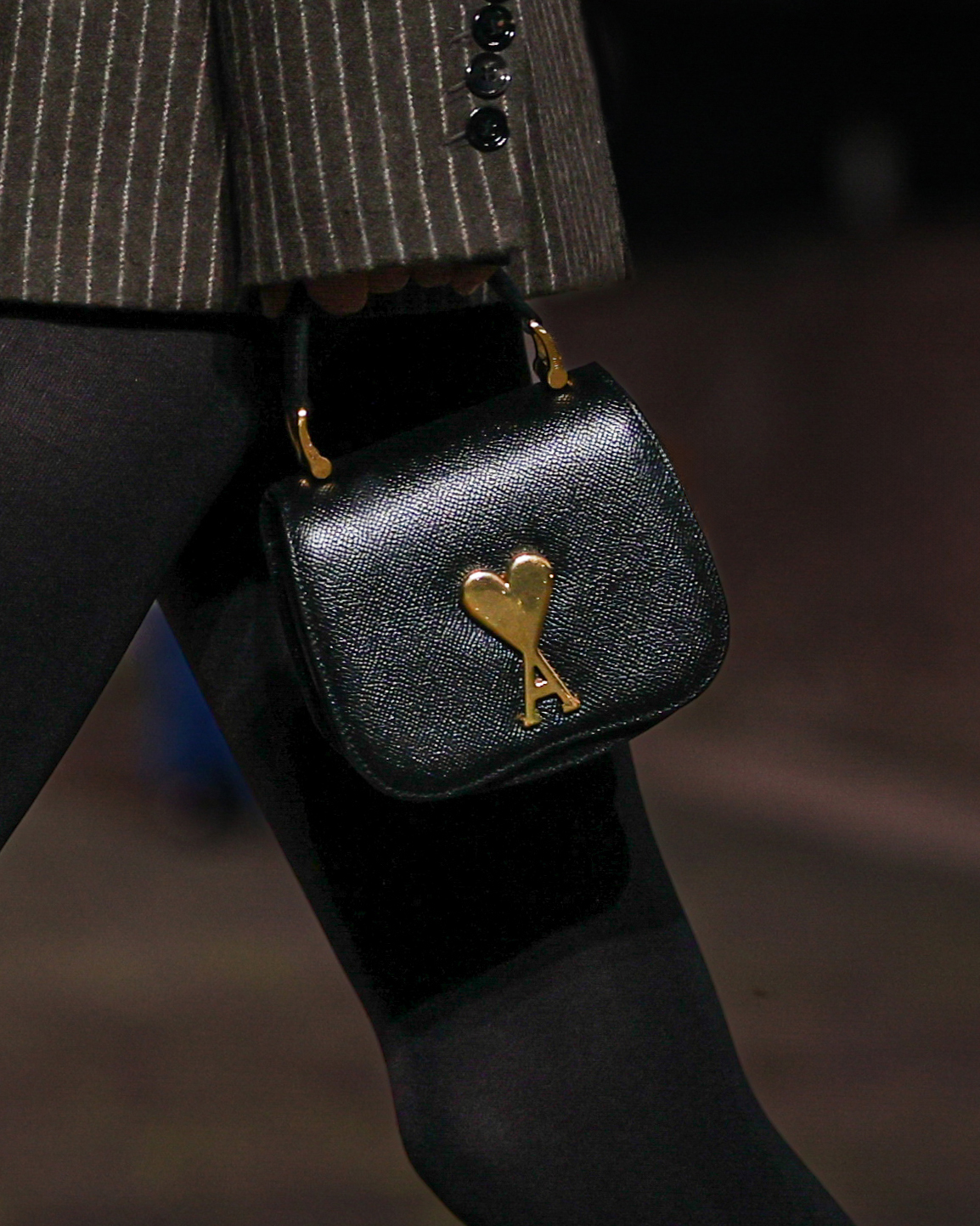
AMI 2024 Fall/Winter Collection Paris Paris bags
Luxe.co: What are AMI’s plans for the children’s clothing category in the future?
Nicolas Santi-Weil: Alexandre wants to do children’s clothing because the AMI logo (is very suitable for children’s wear), and I think we will do well because we have launched a children’s capsule collection that sold out quickly.
People who have children say, ‘I really want to dress my child in AMI clothes, can you design a collection?’ Therefore, children’s wear will definitely be a part of AMI’s future, but not too soon.
Luxe.co: Does AMI have any business goals in terms of data for the future?
Nicolas Santi-Weil: First, data is not the main goal. Our main goal is to position ourselves correctly, at the right level, to build a sustainable business, hold proper events, fashion shows, hire more experienced sales staff, etc.
Therefore, we don’t have a strategic plan, but we will continue to build the brand and respect time. I believe if you don’t respect time, if you move too fast, you can destroy the brand, destroy these stories, so we want to proceed step by step.
But the good side is, we have already exceeded our 2023 target of 300 million euros. In the coming years, AMI will still see tremendous growth, and we see this growth happening. Trust me, we will still see significant growth.
We are increasing marketing activities in China, confident that China is a huge market for us, and we hope to continue investing in China. I’ll say it again, when I say invest (in the Chinese market), it’s not just about money, it’s about people, it’s about culture, so this is a broader investment.
| Photo Credit: AMI
| Editor: Elisa

